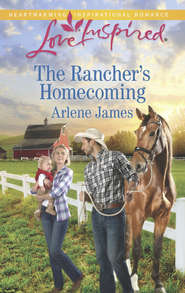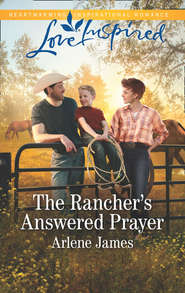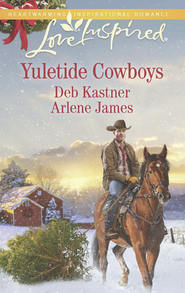По всем вопросам обращайтесь на: info@litportal.ru
(©) 2003-2025.
✖
Fortune Finds Florist
Автор
Год написания книги
2018
Настройки чтения
Размер шрифта
Высота строк
Поля
“Not much better,” she muttered.
He moved toward the door, tossing a wry smile over his shoulder on the way. “You’re the one who wanted to be a farmer. Of course, daylight comes a lot earlier in spring and summer, which is when the real work is done.”
Completely willing to humiliate herself in order to foster the easygoing banter, she made an exaggerated face of distaste.
Laughing, Sam reached into his coat pocket, extracted the agreement and saluted her with it. “See you Saturday. Partner.”
Partner. It sounded even better than she’d imagined.
Sam gazed around the high-ceilinged, octagonal foyer without expression. Sierra watched him take in the little artistic setbacks displaying vases of fresh flowers, naturally, and the open, sweeping staircase before he looked pointedly at the mug in her hands.
“Coffee smells good.”
Sierra tried not to show her surprise, though why she should be surprised by the fact that Sam enjoyed a cup of coffee early of a morning she didn’t know. Coffee was “in” with the younger generation these days. Funny, the longer she knew him, the older Sam seemed.
“Come on in, and I’ll get you a cup,” she said, turning down the central hall.
Glancing over her shoulder, she caught him looking from room to room as they passed, but her smile of pride died when she saw the frown he was wearing. So, he didn’t approve of her house, either. For Pete’s sake, it wasn’t as if she’d built a replica of the Taj Mahal. A quarter-million dollars happened to buy a lot in their corner of Texas, but not that much. The house was only 3,500 square feet, with three bedrooms and a study upstairs, where Tyree and Bette’s teenage daughter, Chelsea, now slept, and the living areas all downstairs.
The house looked elegant and expensive, much like the house in which she’d grown up, but with contrast-colored picture-framing on the walls and lots of arches and display niches and plenty of ceramic tile and lush carpeting on the floors. She’d put her money into the infrastructure, believing that it was best to build to last, and cut some corners on the fixtures, going for unique rather than expensive, but still she’d caught major flak from her father and bankers for spending too much.
She led Sam into the bright, white-tile-and-natural-woods kitchen with its cheery yellow-and-orange accents, took a cup from the cabinet and filled it with the best freshly brewed coffee that money could buy. “Take anything in it?”
“No, thanks.” He gestured toward the breakfast nook, pulling papers from his coat pocket. “Why don’t we sit and take a look at what I’ve come up with?”
“Sure.”
While he shrugged out of his coat and hung it on the back of a chair at the table, she placed his mug in front of him and sat down on his right. He sat, unfolded the papers and reached for his cup.
“Mmm, excellent. Now these are planting guides for the dozen blooms you stipulated and about ten more that lend themselves easily to our climate.” He shifted a specific paper toward her and added, “These are the bestselling exotics, but we’ll get into those later.”
“How many acres do you propose we plant?”
“I’ll know better when I get a look at the fields, but I suspect we’ll only want to put about a third of our—that is, your—acreage into cultivation.”
Sierra frowned. She’d envisioned the whole 160 acres ablaze in summer blooms. “Why is that?”
“It’s just good land management. Flowers and vegetables take lots of soil preparation. They require lots of nutrients. By rotating our fields, we can protect the viability of the soil and the quality of our crops. We’ll plant some cover crops and plow those under in order to feed the soil, but a third of the fields will simply lie fallow year to year. Fortunately, flowers are a high-yield, high-return product, so our acreage is more than sufficient. In fact, it’s quite abundant.”
“You’ve really done your research,” she observed.
He nodded, drank from his cup and went on. “We’ll need help initially. Flower farming, like vegetable farming, is a labor-intensive operation. Bear that in mind when you look over the cost estimates. Overall, the amount of soil preparation needed this first year will dictate how much initial profit we make, but I think a conservative estimate is twenty to twenty-five thousand.”
Sierra tried not to gasp in dismay. “That’s all?”
“Per acre.”
“Oh.” What she really meant was “Wow!”
“That’ll rise after we get over the hump of initial investment and figure out exactly what our soil will best support,” he went on. “The worst areas should probably go into lavender. It’s hardy, practically grows itself and is useful for sachets, perfumes, dried flowers and filler. Sunflowers are another hardy pick with multiple uses. The showier blooms are the more profitable, of course, so our best fields will go to those. We’ll be planting strips of rye and wheat around the perimeters of those fields to protect the blooms from the wind and get those nice, straight stems that you floral designers are so crazy about.”
“I never even thought of that,” she admitted.
He just shrugged and went on, his enthusiasm positively infectious. “We may have to do some irrigating, but I actually own a few sections of aboveground irrigation equipment that I took in trade for some work I did last year, and we have our own well here, so that’s not a major concern.”
Sierra sat back and regarded him frankly. “I have to say, I’m impressed.”
“Good,” he said. “That means you’ll listen while I make this next proposal.”
She would’ve listened to him read the weather report, but then realized that was very likely to happen, considering the business they were now in. “Let’s hear it.”
“Greenhouses. They’ll add to the initial outlay, but not as much as you may think. We’ll need two for start. One we’ll use to germinate seedlings. The other will allow us to grow the more exotic blooms that our general climate prohibits. I can design and build them myself. They’re very simple structures, actually, but I won’t lie to you. They could be expensive to operate. We’ll have to keep the lights on sixteen hours a day, control the climate 24/7 and do lots of watering. But the returns can be very substantial.”
Sierra bit her lip, excited but leery. One thing she’d learned the hard way was that money spent fast. “Let’s take a look at the cost estimates.”
They put their heads together over the numbers, and Sierra found herself dismayed. “Sam, that’s nearly all of my capital.”
“Surely you weren’t thinking of pouring cash into this,” he said.
“Why take out loans when you have cash?” she demanded.
“Because it’s smarter,” he explained. “Look. If you take out a loan and the proposition fails, you’re going to lose some property and some money, but you’ll also have money left. Once money’s spent, though, it’s gone. Yours should be tied up in long-term investment.”
“Most of it is.”
“It should stay that way.”
“But you pay interest on borrowed money.”
“And you make interest on invested money, which you use as a kind of collateral to secure your loans.”
“Tell that to the bankers,” Sierra retorted. “They won’t loan me money.”
“Well, that doesn’t make any sense.”
She glanced around her uneasily and admitted, “It’s this house.”
He hooked an elbow over the back of his chair and looked around. “It’s quite a house, but I don’t see the problem unless you owe more against it than it’s worth.”
“That’s the thing,” she said warily. “I don’t owe anything against this house, and I absolutely refuse to use it as collateral.”
He stared at her for a moment. “You actually paid cash for this house?”
She lifted her chin defiantly. “Yes. A quarter of a million dollars. And I’d do it again.”
He just shook his head. “Women!”
“I beg your pardon.”











